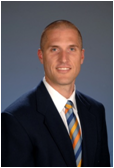by Matt Herring, University of Florida

A few weeks ago I was discussing tri-planar mobility with my interns. During the discussion, someone asked about functional progression. The question was “Can you enhance a movement in a proficient plane before gaining mobility in all planes? Can we load a sagittal lunge before the athlete can perform a lateral lunge? Will loading of that one plane hinder the ability to improve mobility in the other planes?”
My CYA answer was “It depends.” I then rambled on about how no movement is purely single-plane and that movement occurs in all planes even if it appears to be dominant in one-plane. I think most of my interns nodded their heads more out of confusion than agreement, but it allowed me a second to gather my thoughts on the question. My first concern was why did my interns all assume loading was the next functional progression after mobility? Why was “enhance” synonymous with “loading”? Obviously I haven’t taught functional progression well enough for them to understand and appreciate “enhancement”. How better to appreciate a concept that to demonstrate. I decided that we would use their example of a sagittal lunge to demonstrate that “enhancement” doesn’t need to be external loading.
We first established that we all had full mobility in the sagittal plane. From there we progressed to using hand reaches while lunging -anterior at various heights, posterior overhead, frontal at various heights, and transverse at various heights. Next, we progressed to alternate reaches-one hand in one plane, the other hand in another plane. After just using hand reaches, their understanding of “enhancement” was changing.
We then progressed to different foot positions. First were frontal tweaks-a little wider than normal, narrow, or even crossover. Next transverse-toes slight internally or externally rotated. Of course, combining frontal and transverse was an easy progression. Wide with toes in, crossover with toes out. Suddenly, their appreciation was growing. I then challenged them to develop their own variations. Soon, they were combining foot positions with hand reaches to come up with a great variety of challenging lunges, and we never used an external load.
By now their heads were swimming with new ideas and movements to try, so I decided to call it a day. But before we adjourned, I briefly introduced other enhancements, like lifting the trail foot to finish the lunge balanced on one leg. How about looking in a different direction as you lunge to change your visual feedback? How about speed lunges? Or lunging off a small box to increase the eccentric load? What about bounding into the lunge? Now imagine all of those with the various hand reaches. Information overload had been achieved. But that was my objective. I wanted them to understand external loading is not the only method to “enhance” a movement. By using these methods, a movement can be enhanced in the proficient plane and mobility can be addressed in the other planes simultaneously. It is up to us to find the athletes’ individual level of success and build from there. The next challenge was finishing tri-planar mobility.
I think I’ll save that one for another day…
